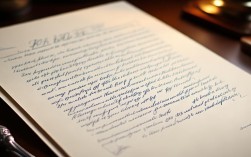In the realm of English writing, mastery lies not just in grand ideas but in the meticulous attention to detail. Whether composing an academic essay, a business proposal, or a creative piece, the smallest elements—word choice, punctuation, sentence structure—can elevate writing from ordinary to extraordinary. This article explores why details matter, how they shape clarity and impact, and practical ways to refine them.

Why Details Define Quality
Great writing resonates because it feels intentional. Consider the difference between:
"The man walked into the room."
and
"The professor strode into the lecture hall, his leather-bound notebook tucked under one arm."
The second sentence paints a vivid picture through specific nouns ("professor," "lecture hall"), precise verbs ("strode"), and sensory details ("leather-bound notebook"). Such precision engages readers, builds credibility, and demonstrates command of language—key factors in E-A-T (Expertise, Authoritativeness, Trustworthiness) for search algorithms and human audiences alike.
Three Areas Where Details Matter Most
Grammar and Punctuation
A misplaced comma or inconsistent tense can distort meaning. For example:

- Ambiguous: "Let’s eat, Grandma!" vs. "Let’s eat Grandma!"
- Inconsistent: "She writes the report and submitted it." (Mixing present and past tense.)
Tools like Grammarly or Hemingway Editor help catch errors, but manual proofreading remains essential.
Word Choice and Conciseness
Weak verbs and vague adjectives dilute impact. Compare:
- Weak: "The movie was very good."
- Strong: "The thriller captivated audiences with its unpredictable plot twists."
Avoid filler phrases ("in order to" → "to") and redundancies ("advance planning" → "planning").
Structure and Flow
Paragraphs should guide readers logically:

- Problem: Jumping between ideas without transitions.
- Solution: Use connectors like "however," "for instance," or "conversely" to link thoughts.
Practical Steps to Improve
- Read Aloud
Hearing sentences exposes awkward phrasing. - Edit in Layers
Focus first on ideas, then grammar, finally word-level polish. - Study Examples
Analyze well-written articles from sources like The New Yorker or academic journals.
The Ripple Effect of Precision
In professional settings, detailed writing minimizes misunderstandings. A contract missing a single clause can lead to disputes; an unclear email may waste hours clarifying. Academically, rigorous citations and precise terminology reflect scholarly integrity. Even in creative writing, authenticity emerges through carefully chosen details—a character’s frayed coat sleeve or a recurring symbol.
Beyond mechanics, details signal respect for the reader’s time and intelligence. They transform generic statements into memorable insights, whether crafting a persuasive argument or describing a sunset.
Writing is both art and craft. While inspiration sparks ideas, discipline shapes them into coherence. Every semicolon, every synonym, every transitional phrase is a brushstroke in a larger picture. The difference between competent and compelling often resides in these minutiae—proof that excellence lives in the details.
As you refine your own work, remember: clarity and precision are not constraints but liberators. They give wings to ideas, ensuring they land exactly as intended.



